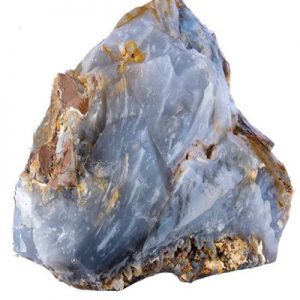Chalcedony
Chalcedony is a translucent, usually greyish blue, variety of cryptocrystalline, or fine-grained, Quartz by having a microstructure that is fibrous. Chalcedony has traditionally been understood to be a cryptocrystalline that is fibrous of Quartz, but recently it has been shown that much Chalcedony is really a mixture of Quartz and Moganite, another silica mineral.
Chalcedony includes subvarieties being many once the numerous varieties of Agate, Binghamite, Bloodstone, Carnelian, Chrysoprase, Onyx, Pietersite, Petrified Wood, Sard and Sardonyx. When Chalcedony is concentrically banded (often in instead patterns that are wild it is called by the subvariety name Agate. It is named after the subvariety name Onyx when it is in flat layers or bands of black and white. It is called by the subvariety title Sardonyx whenever it is in flat layers or bands of light and dark shades of reds, browns and white.
Many non-banded forms of Chalcedony, such as Moss Agate, are often erroneously called “Agates”. True Agate is concentrically banded. Included and mottled chalcedonies tend to be more properly called simply ‘Chalcedony.’ Petrified Wood (agatized wood) is the title fond of fossil timber where the replacement associated with the wood is through Chalcedony, but the banding, in this case, is a result of the timber structure – not concentric deposition of the Chalcedony – and the material is Chalcedony, not the case Agate.
| Category: | Oxide minerals, quartz group |
| Chemical Formula: | SiO2 (Quartz) |
| Silicon Dioxide | |
| Color: | White, blue, red, green, yellow, orange, brown, pink, purple, grey, black, colourless, and multicoloured. |
| Hardness: | 6 – 7 |
| Specific gravity: | 2.59 – 2.61 |
| Luster: | Waxy, vitreous, dull, greasy, silky |
| Transparency: | Transparent to opaque |
| Cleavage: | Absent |
| Tenacity: | Brittle |
| Fracture: | Uneven, splintery, conchoidal |
| Diaphaneity: | Translucent |


